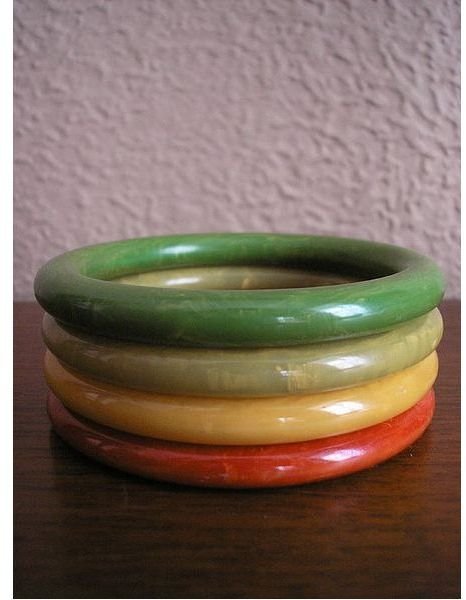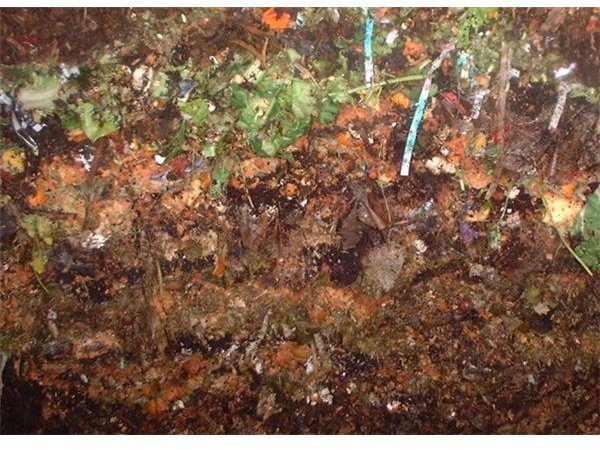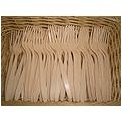The Processes for Forming Biodegradable Products
What Are the Different Types of Biodegradables and How Are They Formed?
To understand how biodegradable products are formed we must first determine the types of biodegradables to examine. The majority of today’s consumers still think of biodegradable products as the ultimate solutions to landfill problems, and that they can be thrown away or used as compost. There is a general misconception that all of these materials will disappear by way of natural decomposition. Globally, communities are still faced with mounting landfill problems as biodegradable wastes continue to pile up; while local governments meet funding difficulties in maintaining waste management solutions.
The following sections provide overviews on the different processes applied in forming biodegradable products. This article is aimed at enhancing the consumers’ knowledge about the distinctions regarding the three different types of biodegradables, so they can make informed decisions on how they can help in lessening their respective community’s waste management problems.
(1) Degradable Products

Degradable products are made from plastic material that is oil or petroleum based. They do not decompose or completely deteriorate through natural processes. Their state of degradation will result in a loss of properties, resulting in a reduction of quality. This form of degradation is merely the breaking down of the original material, which includes oil or petroleum, into smaller fragments. A degradable product is capable of being converted into a different chemical structure, and will often leave residues in the environment.
Degradable plastics are made from polymers, which are described as having a chain-like structure. Polymer sources in this case can be natural starch, protein, rubber and cellulose, or man-made, like polyethylene, polypropylene, phenol-formaldehyde resin (Bakelite) or urea-formaldehyde resins, polyester resins, vinyl acetate, methyl acetate or vinyl chloride.
The following is a brief description on how degradable products are manufactured:
-
At the extrusion stage of the plastic production, a pro-degradant will be introduced to the material_._ The pro-degradant is in the form of metal-salt and will be added to the polymer to act as a catalyst. This now will cause the breakdown of the polymer’s molecular chain structure. It is said that only 1 to 3% of the pro-degradant additive needs to be added to an entire master batch of plastic being processed. The plastic material will become brittle, thus giving it the capability to disintegrate into tiny flakes.
-
Some type of stabilizers will also be added to the master batch to serve as protection for the pro-degradant substance when the plastic pellets go through the melting process. The amount of stabilizer added however, will depend on the purpose of the plastic product being formed; hence, the amount of stabilizers required will depend on the time-scale fit for the product’s purpose.
-
As a note_, extrusion_ is described as the stage when the plastic, still in its pellet form, will enter a machine called Extruder. This is where the plastic pellet will be softened by heat and friction. It will then be forced or extruded out of the machine, and goes into cool water where it will solidify.
Please proceed to the next page for information on how biodegradable products are made.
(2) Biodegradable Products

Biodegradable plastic products are made from different types of biodegradable polymers that were chemically engineered by adding chemical linkages in the forms of hydrolysable (ester) bonds. This is to achieve polymer degradation. A substance is said to be hydrolysable if its degradation can be triggered by hydrolysis, or by enzymatic actions of microorganisms that eat and digest the polymers.
The degradation ingredient combines with the polymer to form the raw materials used in biodegradable products. Examples of these raw materials are Poly (esters) that are polyactide (PLA) based, polycaprolactone (PCL) based, polyglycolide (PGA) based and other bio-environmentally degradable polymers. These include natural polymers like polysaccharides or modified starch, chitosan and cellulose. The degradation is said to produce hydroxy acids, wherein such acids are commonly used for skin-care products, thus considered as environmentally safe.
The following provides an overview of the processes involved in forming biodegradable products. The raw material applications are used for thermo-formed drinking cups, take-out food trays, plastic containers, plant boxes and other plastic products that demand rigidity as a replacement for polystyrene, or more commonly known by the brandname Styrofoam.
-
Biodegradable polymers can be easily processed with the use of any conventional extrusion machine. The extruder is initially cleaned and brought to a temperature suitable for low-viscosity general purpose polystyrene. Prior to the introduction of the biopolymers into the extruder machine, the hopper system will be vacuumed to avoid contamination. The polymer will likewise be purged and thereafter, the heat will be reduced at the desired set points according to its product application. After use, the extruder will again be purged using high-viscosity polystyrene or polypropylene.
-
The extruded polymer will now undergo in-line drying, but leaving a recommended moisture content of 0.025 or 250ppm as a preventive measure against viscosity degradation. The drying process requires that the resin should not be exposed to atmospheric conditions once the process is completed, but it must be kept sealed in a package until ready for use. Polymer plastic pellets that had been exposed to atmospheric conditions for an extended period will require additional drying processes. Any sealed packages that had been opened should be quickly re-sealed if there are any unused items left.
-
In order to fully biodegrade products made from biodegradable polymers a temperature of at least 60C is required, usually in a large-scale composting processor. The product passes two stages in the degradation process, first through hydrolysis that breaks it down into water soluble compounds and lactic acid. The resulting compounds will be CO2, water and biomass, wherein microorganisms will be expected to feed on them for its rapid metabolisation.
(3) Compostable Products

The raw materials used to produce compostable products are those that pass the testing requirements of the American Society for Testing and Materials (ASTM) provided under the standard codes ASTM D-6400 or D-6868. The most common raw material certified as compostable by the ASTM are the PHA compounds or polyhdroxylalkanoates. Some PLAs or polymers derived from the lactic acid of corn wet milled starch do not qualify as compostable, inasmuch as they are not capable of breaking down if released in landfills.
Compostable products are those that have the capability to biodegrade in a compost environment without the need to be included in waste collection and processing programs. Compostable raw materials are typically derived from a variety of natural products including potato, corn and wheat starches. As such, they have the ability to biodegrade through natural processes, and produce carbon dioxide, water, biomass and inorganic compounds. They decompose at relatively the same rate as compostable organic compounds, without leaving any residues or traces of toxicity. Manufacturers who claim to make use of compostable raw materials for their products should secure proper documentation to serve as certification of compostability.
Please proceed to the next page for a brief description of how compostable products are made.
Descriptions of the Processes Used in Forming Compostable Products
The following briefly describes how compostable biodegradables are formed:
-
Raw materials are extruded in industry standard equipment in the form of resin or sheet. Formulations for raw materials are developed in close cooperation with their customer’s requirements. The raw material manufacturing process goes through a single-stage process from its modified corn starch into a finished roll-stock as resin or sheet.
-
Thereafter, these raw materials will pass through the extruder machine, where heat will be applied to the starch and the resulting melt will be fed to the product’s proprietary design. The extruded melt will be loaded through a sheet die or strand die.
-
If the melt is cast in a sheet die, it will flow through a series of heated rollers, pass to a gauging system, and then go into a dryer to bring the moisture level to its requirement. Thereafter, the sheet will be evenly trimmed; slits will be cut as specified and will be wound into a roll. These rolls will be stored in dry areas within the same facility, to protect the processed raw materials from changes in temperature and humidity.
-
If the melt passes the strand die system, the resin will be pelletized and dried with the use of conventional drying equipment. After the pellet granules are dried they will be packed inside a resin lined bag.
-
The processed resin and sheet are now readily convertible into packaging materials, requiring little or no modifications in the process. Vacuum-pressured forming machines will be used to convert the sheet on a thermal plate in the form of a mold, with a modified heating system that will create air pressure.
-
Once the conversion process is done, it will be extruded from the thermal mold by means of cutting, thus leaving behind a web from where the molded sheet was cut. This web will be fed back to the extruder for grinding and reprocessing. The re-processed sheets are said to lose some of their qualities, thus only 30% of these recycled materials will be added to current materials under manufacture..
These are the different processes in forming biodegradable products according to their classifications as degradables, biodegradables and compostables.
Reference Materials and Images Credit Section
Reference Materials:
- https://biodegradables.org/
- https://envs.colorado.edu/uploads/grad/Biodegradable_Packaging.pdf
- https://www.degradable.net/how/in_detail.shtml
- https://www.polysep.ucla.edu/che212/Resources/What%20are%20Polymers.htm
- https://www.iupac.org/polyedu/page33/page33.html
- https://www.jobwerx.com/plastics/extrusion.htm
- https://www.environment.gov.au/settlements/publications/waste/degradables/biodegradable/chapter3.html
- https://www.sigmaaldrich.com/materials-science/biomaterials/tutorial.html
- https://www.plantic.com.au/our-technologies/capabilities/conversion-technologies/
- https://www.plantic.com.au/our-technologies/capabilities/manufacturing-process/
- https://www.calrecycle.ca.gov/publications/Plastics/2009001.pdf
Images Credit:
- Wikimedia Commons
